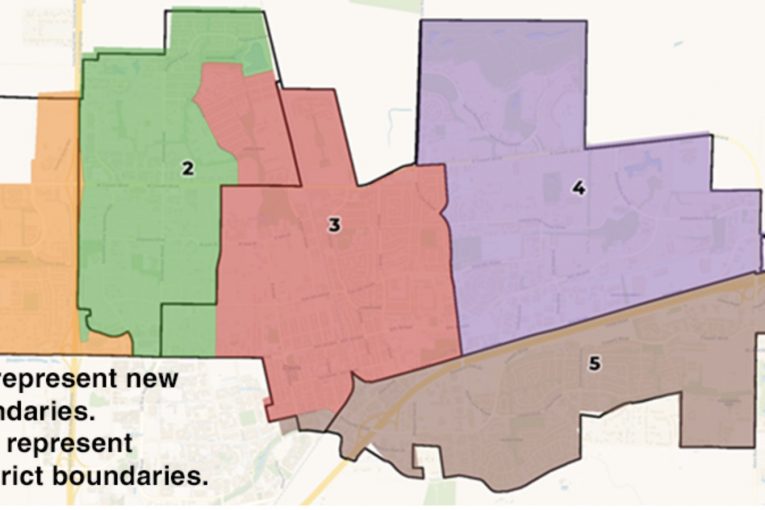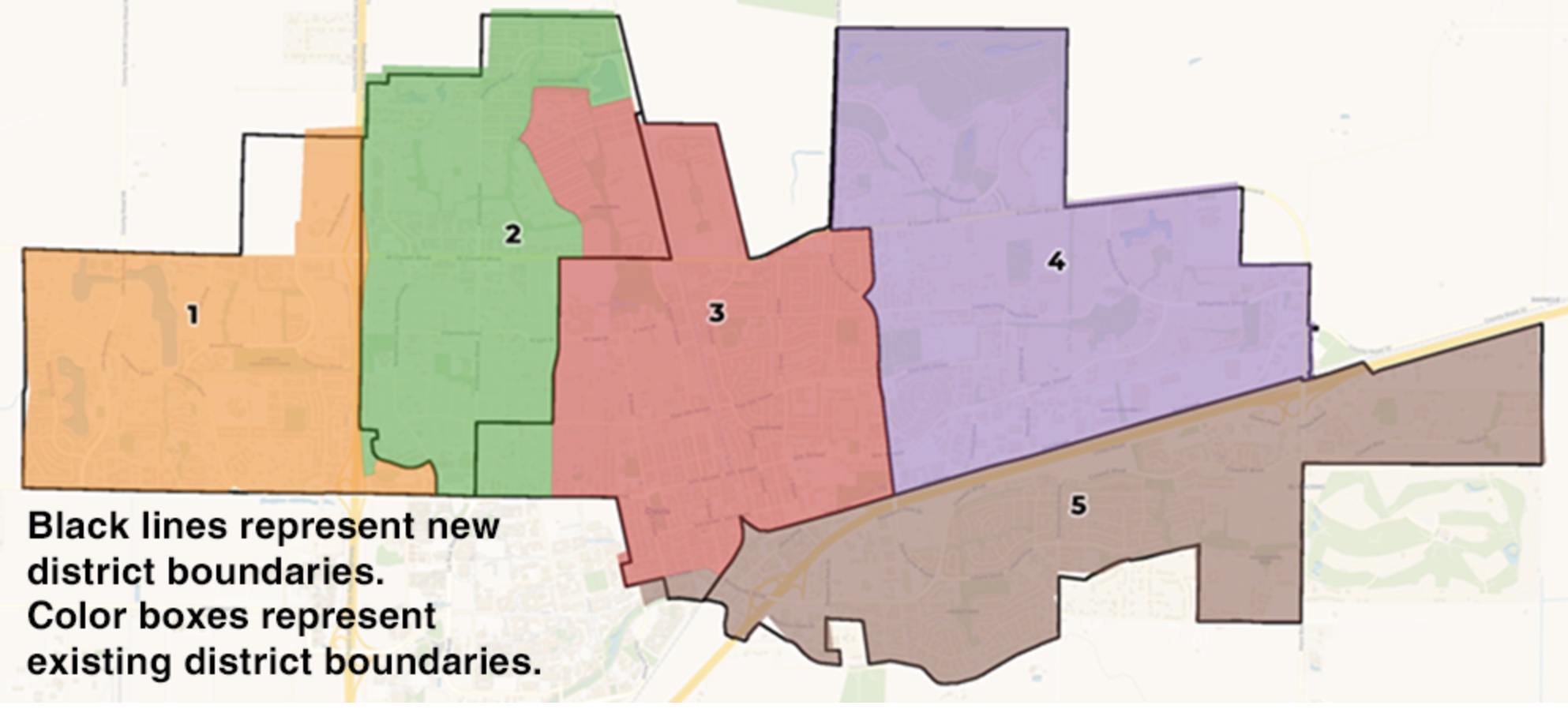

By David M. Greenwald
Executive Editor
Davis, CA – A recent letter to the Enterprise by Matt Williams backed up the opinion that Davis should rescind its district elections and return to at-large voting.
Williams argues, “There is nothing to prevent the Council from taking the necessary first steps toward a Council Ordinance rescinding the prior decision that put District elections in place. The city’s lawyers will no doubt counsel with an abundance of caution, fearing a lawsuit, but I am of the opinion that we have nothing to fear but fear itself.”
While I largely agree that we need to have a plan to return to at-large voting rather than district elections, I don’t think the time is quite upon us just yet.
For one thing, Williams notes, “With the recent Santa Monica case on the books, the chances of a judgment for court costs and legal fees is severely reduced, and that means any lawsuit would be very costly to the plaintiff.”
He adds, “Given Santa Monica, the plaintiff might even find themselves (if they lose the case) facing a judgment to pay the city’s court costs and legal fees. That makes the decision to sue much, much, less attractive.”
But that’s not quite true—at least just yet.
One June 27, the lawsuit Pico Neighborhood Association v. City of Santa Monica was heard by the California Supreme Court. That means that by the end  of the calendar year, we will have a decision in this case.
of the calendar year, we will have a decision in this case.
It doesn’t really make any sense for the city of Davis to do anything until after the court rules. If the court rules in favor of the city of Santa Monica—and that is probably the most likely outcome as I will explain shortly—that gives the city a binding precedent with which to act to reverse the districts and return to at-large voting.
At that point we wouldn’t even need to speculate as to whether former Supervisor Matt Rexroad would file a lawsuit—he most likely would not.
On other hand, should the court defy expectations at this point—there would be a binding precedent the other way which would negate any speculation about the merits of the case and force the presumption back to the calculation that the plaintiffs would likely prevail.
That was the initial calculation by the city—they felt that any litigation would be lengthy and costly and was unlikely to prevail. But Santa Monica has done us all a favor by engaging in that long and tortuous road in our stead.
The initial court had found that the Plaintiffs in the case had proved “that racially polarized voting had plagued Defendant’s at-large city council elections for at least the last quarter century, leading to a dilution of the Latino vote.”
But subsequent court rulings have reversed that initial victory.
Of particular note is the opinion of the AG’s office, which while declining to weigh in on one side or the other, issued an amicus that is suggestive of the way forward.
In particular, this case presents “the first opportunity for the Court to interpret this important statute and its ‘vote dilution’ standard.”
In the AG’s opinion, “To establish vote dilution under the CVRA [California Voting Rights Act], there must be a showing that an at-large electoral system in particular has precluded a protected class from exercising the power it would otherwise have to meaningfully influence the outcome of elections if the at-large system had not been adopted.”
The AG argues that in order to meet this standard, the plaintiffs don’t need to show that a district could be drawn that is effectively majority-minority, nor must it show that it would have a near-majority of residents in the protected class, instead, they only need to show that “an at-large electoral system is responsible for the protected class’s lack of electoral influence based on a totality of the circumstances and the specific facts of the particular case.”
The question is whether the Supreme Court will adopt that standard—because the AG’s opinion is not binding on the court in any way.
But it seems reasonable and, if they do, it appears that Davis would be in a very strong position to reverse its decision to create districts and reinstate at-large voting.
Along these lines, an amicus filed by, among others, The League of Women Voters of Santa Monica, the Alliance of Santa Monica Latino and Black Voters, the Human Relations Council Santa Monica Bay Area, and Community for Excellent Public Schools sides with the city of Santa Monica.
They share the opinion that “Santa Monica’s Latino and Black voters have greater voting power and influence under the City’s at-large election system than they would have under a district elections system, as evidenced by the success of Latino and Black voters in electing the candidates of their choice, including Latino and Black candidates.”
I think that’s probably true of Davis as well, given that there are no enclaves of people of color in the city of Davis that get diluted in at-large elections.
Given that, and given that no district even gets to 40 percent minority voters under the district system, the winner-takes-all approach of the current system actually forces any candidate to win the most votes, making it more difficult not less difficult for minority candidates to win office.
Although it is worth noting that in the 2022 election, both candidates of color prevailed in their elections—one of them against an incumbent.
Still, I think the demographics and distribution in Davis are such that if the city of Santa Monica prevails, the city of Davis would reasonably expect to as well—and it is unlikely that under such conditions someone would attempt to sue the city, much less expect to be successful.
But, there seems to be absolutely no percentage to jumping the gun here. The city ought to wait for the decision.
While I think districts are suboptimal, they are hardly a travesty to democracy. I simply believe that districts in Davis did not increase the voting power of minorities or even students, and thus serve no benefit that overrides their detrimental effects.


.
The logic of the above statement by the AG is elusive at best. To illustrate that elusiveness, use an example of a hypothetical city with an at-large district where the minority has 20% of the voters. The districts can be drawn so that one district has 30% representation of that minority, a second district has 25%, a third and fourth districts have 20%, and the fifth district has 5%. Five districts of 20% = a weighted score of 100. 30% plus 25% plus 20% plus 20% plus 5% gives the same weighted score of 100. In that scenario the minority constituents in the first two districts have “greater influence,” the minority constituents in the third and fourth districts have “the same influence,” and the minority constituents of the fifth district have substantially “less influence.”
Bottom-line any increased influence for the minority constituents in one district comes at the expense of decreased influence for the minority constituents in one or more other districts.
All that is being done is “shuffling the deck chairs on the Titanic” UNLESS a majority-minority district is formed during the shuffle. The CVRA is not supposed to be trying to REDUCE the influence of minority voters.
Further, in the at-large system, minority candidates can be elected when coming in second in the election results … in some cases even coming in third gets them elected. Arguably, the prospects of only having the option of coming in first in order to be elected also REDUCES the influene of minority voters.
The decision by the Supreme Court should be an easy one.
“Bottom-line any increased influence for the minority constituents in one district comes at the expense of decreased influence for the minority constituents in one or more other districts.”
There has long been a debate over whether it’s better to create a minority-majority district or to distribute the influence across districts. What I think is the issue in Santa Monica and certainly in Davis is that there is no way to really do that – create a minority-majority district. So you end up with a single-member, winner take all district which diffuses influence for communities of color.
You and I are saying the exact same thing. It is nice to agree.
I also agree with this.
Richard: Why do you care what Matt thinks, since (to my knowledge) he’s neither a “resident” nor “stakeholder” in Davis?
Or at least, has never discussed this on here.
I’d love to see a ranked-choice voting system implemented. It would provide benefits whether we go back to at-large OR if we stay with single member districts. It captures the preferences of voters in a much more robust way.
Tim, do we need to be a Charter City in order to go to ranked choice voting?
I’ll answer for Tim. Yes, Davis would have to be a charter city to adopt ranked choice voting.
In 2019 a bill was passed that would have allowed general law cities to adopt ranked choice voting, but the governor vetoed it. On the other end of the spectrum, in 2022 a bill that would have banned charter cities from using ranked choice voting failed in the legislature.